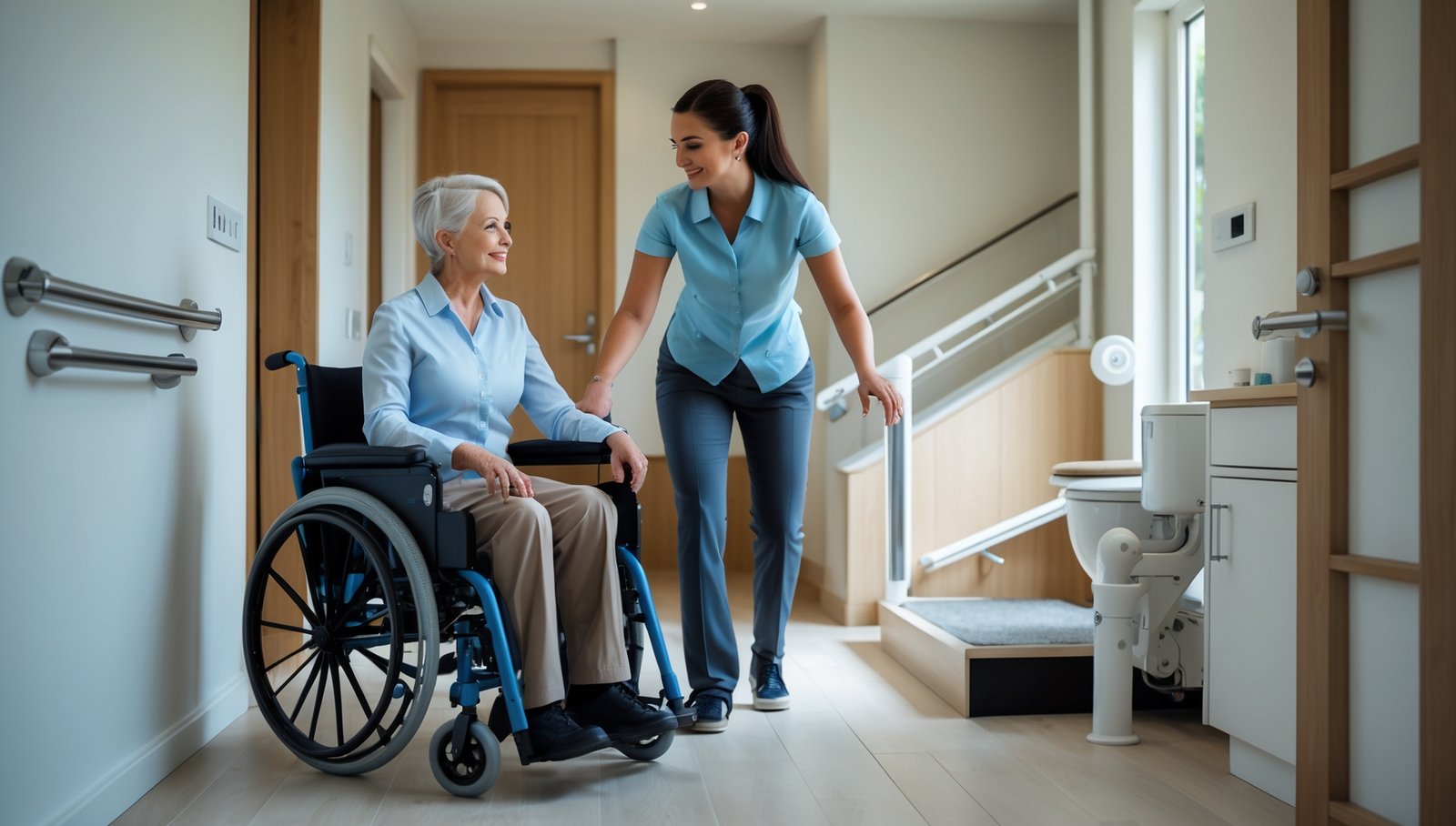Creating a safe, accessible, and comfortable home environment is essential for individuals with mobility challenges or physical disabilities.
Proper home adaptations can improve independence, reduce risks, and enhance overall quality of life.
Here’s a comprehensive guide with practical advice to help you transform your home into a supportive space.
1. Ensure Accessibility in Entryways and Exits
Make it easy for individuals to move in and out of the home:
- Install ramps: Replace stairs with ramps for wheelchair and walker access.
- Use automatic doors: Consider installing automated door openers for effortless entry.
- Widen doorways: Ensure doorways are at least 32 inches wide to accommodate mobility devices.
2. Optimize Floor Plans for Mobility
Clear and open spaces make it easier to move around:
- Declutter: Remove unnecessary furniture or items that obstruct pathways.
- Use non-slip flooring: Install materials like vinyl, rubber, or slip-resistant tiles to prevent falls.
- Adjust furniture layout: Arrange furniture to create wide, clear pathways.
3. Install Grab Bars and Handrails
Provide stability and support throughout the home:
- In bathrooms: Place grab bars near the toilet, shower, and bathtub for added safety.
- In hallways and stairs: Add sturdy handrails for individuals who require extra support.
- Use wall-mounted aids: Ensure they’re securely installed to handle weight and pressure.
4. Modify Bathrooms for Safety and Comfort
Bathrooms are common areas for accidents, so prioritize safety:
- Walk-in showers: Replace tubs with step-free, roll-in showers.
- Raised toilet seats: Install higher seats or attach a seat riser for easy use.
- Non-slip mats: Place mats in wet areas to prevent slips.
- Shower chairs and handheld showerheads: Provide options for seated bathing and adjustable water flow.
5. Adjust Kitchen Spaces for Accessibility
Make cooking and dining easier for individuals with disabilities:
- Lower countertops: Adjust counter heights to accommodate wheelchairs.
- Pull-out shelves: Install sliding shelves in cabinets for easier access to items.
- Easy-grip utensils: Provide utensils and tools designed for limited dexterity.
- Accessible appliances: Use appliances with front-facing controls and easy-to-read displays.
6. Focus on Bedroom Comfort
Ensure the bedroom is a comfortable and accessible retreat:
- Adjustable beds: Use motorized beds that can be raised or lowered for comfort.
- Low-height furniture: Opt for bedside tables and dressers within easy reach.
- Closet organizers: Install pull-down rods and adjustable shelves for easier access to clothing.
7. Install Assistive Technologies
Technology can greatly enhance independence:
- Smart home systems: Use voice-activated devices to control lights, doors, and appliances.
- Emergency alert systems: Install devices that allow individuals to call for help if needed.
- Lift systems: Use ceiling or floor lifts to assist with transfers between furniture.
8. Improve Lighting and Visibility
Proper lighting helps prevent accidents and enhances comfort:
- Brighten key areas: Use bright, energy-efficient lights in hallways, stairs, and workspaces.
- Motion sensors: Install lights that turn on automatically when movement is detected.
- Contrast colors: Use contrasting colors on walls, floors, and furniture to improve visibility.
9. Make Outdoor Spaces Accessible
Don’t overlook outdoor areas:
- Smooth pathways: Ensure garden paths, patios, and driveways are level and free of cracks.
- Accessible seating: Use benches or chairs with armrests for easier use.
- Elevated planters: For gardening enthusiasts, install raised beds to reduce bending or kneeling.
10. Involve Professionals for Complex Modifications
Some adaptations require professional expertise:
- Occupational therapists: Consult with specialists to assess home needs and suggest tailored modifications.
- Contractors: Hire professionals experienced in home accessibility projects.
- Government grants: Explore financial assistance programs for home modifications.
Benefits of a Well-Adapted Home
- Increased Independence: Individuals can navigate their living space with greater ease.
- Enhanced Safety: Reduced risk of falls, slips, and accidents.
- Improved Quality of Life: A comfortable environment fosters confidence and well-being.
- Ease for Caregivers: Adaptations make caregiving tasks more manageable.
Final Thoughts
Adapting your home for physical disabilities requires careful planning and attention to detail, but the rewards are immense.
A well-designed, accessible space empowers individuals to live independently and comfortably.
At Delta Homecare, we specialize in providing physical disabilities care and can help guide you through the process of creating a supportive home environment.
Need Help?
Contact Us Today!
Let our experienced team assist you with personalized care and expert advice for home adaptations.
Together, we can create a space that meets your needs and enhances your quality of life.




